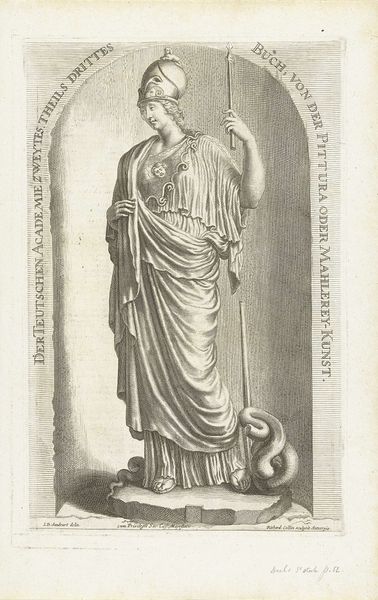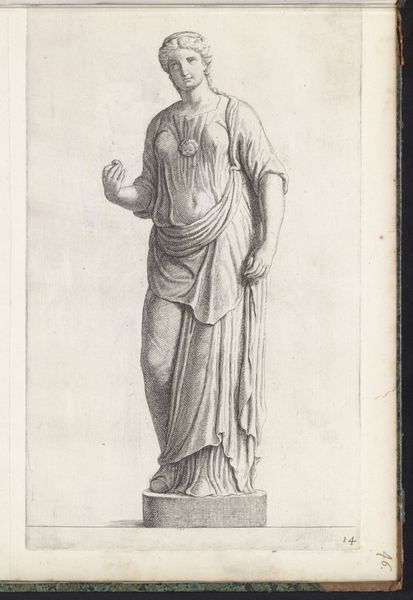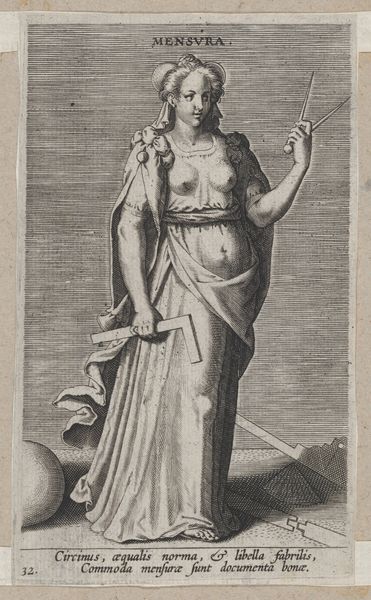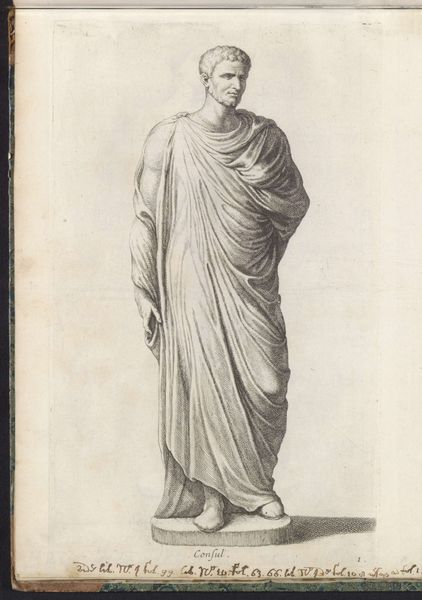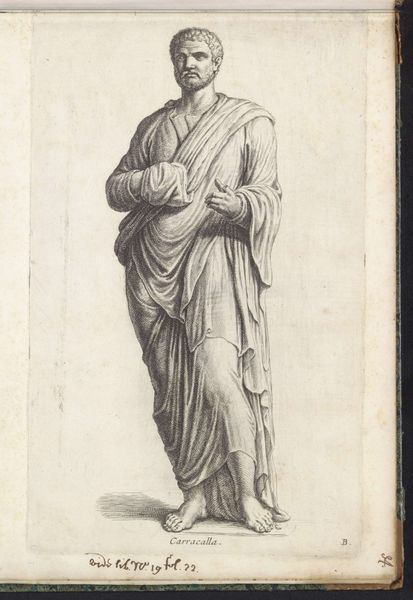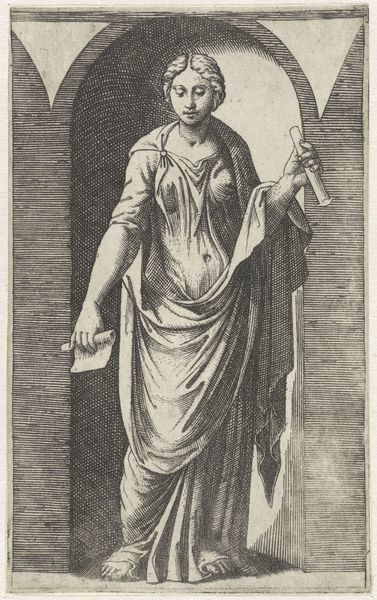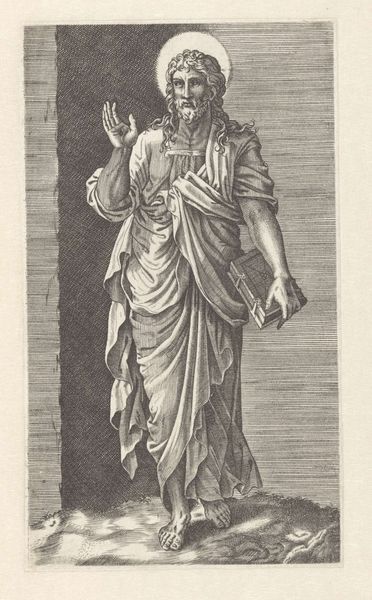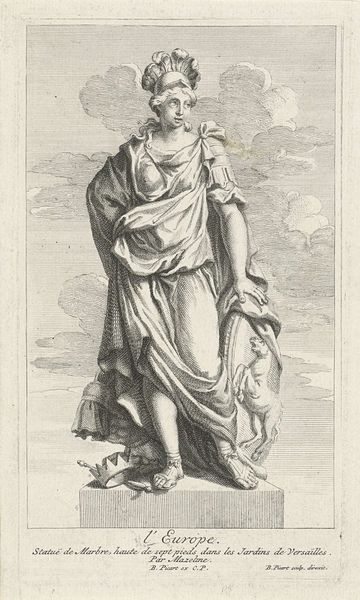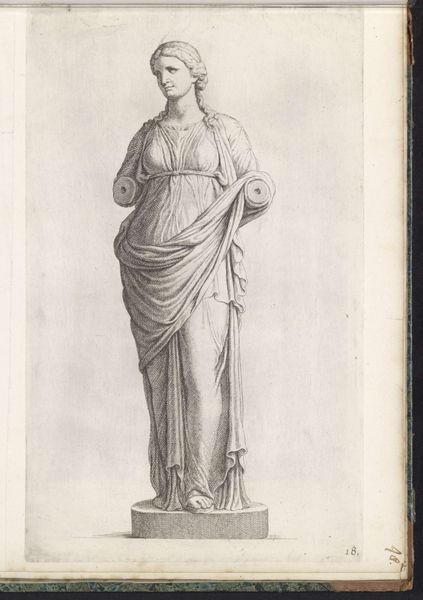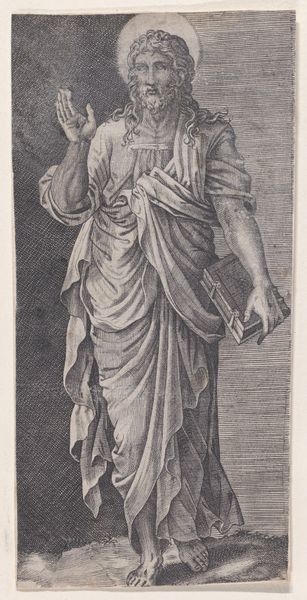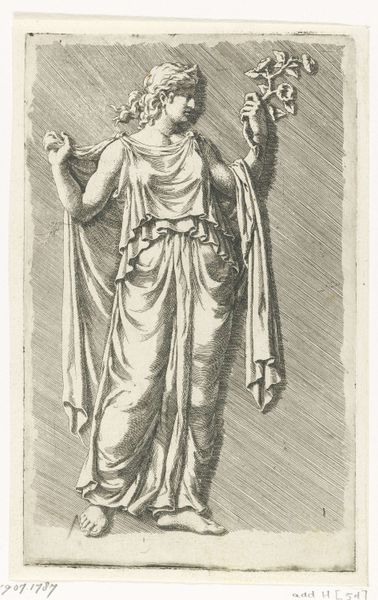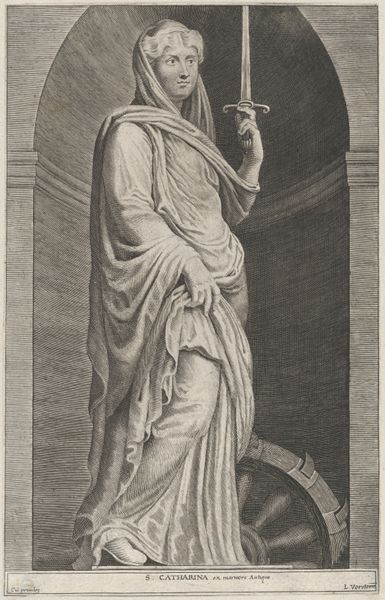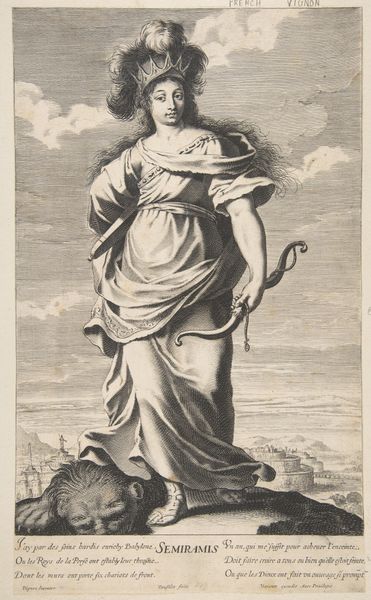
metal, engraving
#
portrait
#
baroque
#
metal
#
figuration
#
line
#
history-painting
#
engraving
Dimensions: height 305 mm, width 210 mm
Copyright: Rijks Museum: Open Domain
Richard Collin created this print of Minerva in the 17th century using engraving. The artist cut lines into a copper plate, which were then filled with ink and printed onto paper. This method allowed for the relatively easy reproduction of images, playing a crucial role in the dissemination of knowledge and artistic ideas. Minerva, the Roman goddess of wisdom and strategic warfare, stands in classical contrapposto, draped and helmeted, with a serpent at her feet. Notice how Collin’s skilled use of line creates a sense of depth and texture, mimicking the appearance of a three-dimensional sculpture. Engraving was a highly skilled craft, demanding precision and control. The resulting prints, like this Minerva, were often collected as objects of both artistic and intellectual value, reflecting a growing interest in classical antiquity and the power of reproducible imagery in society. We can recognize the work, skill and time involved in the production process.
Comments
No comments
Be the first to comment and join the conversation on the ultimate creative platform.
